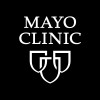
Comparison of Nasal Positive End Expiratory Pressure Valve to Dental Device as an Alternative Treatment...
Obstructive Sleep ApneaAdverse EffectsDetermine the clinical efficacy in terms of Apnea Hypopnea Index (AHI), excessive daytime sleepiness (EDS), nocturnal oxygenation of a nasal Positive end-expiratory pressure (PEEP) valve "Provent" in obstructive sleep apnea. The hypothesis is the efficacy will be better than dental device.

Effect of Nasal Continuous Positive Airway Pressure (CPAP) Blood Pressure and Vascular Endothelial...
Obstructive Sleep ApneaSleep-disordered breathing (SDB) briefly means cessation of breathing during sleep at least 5 times per hour. SDB is a common disorder affecting 9 to 24% of the middle-aged and overall 4% of the middle-aged male population suffers from the Obstructive sleep apnea syndrome (OSA) i.e. Sleep-disordered breathing (SDB) with associated daytime sleepiness. Several major epidemiological studies have shown that SDB is not only an independent risk factor for hypertension but it is also strongly associated with heart failure and stroke. The mechanism for the linkage between SDB and cardiovascular consequences is not fully determined. Vascular endothelial growth factor (VEGF) is a soluble 34-46 kD angiogenic heparin-binding glycoprotein. This cytokine regulates multiple endothelial cell functions including vascular permeability and vascular tone and some data suggest that it may contribute to the atherosclerotic process. Recent studies have shown increased plasma and serum concentrations of Vascular endothelial growth factor (VEGF) in patients with OSA and there were correlations between VEGF concentrations and the severity of OSA, as indexed by the minimum oxygen saturation level and the frequency of the upper airway obstruction per hour of sleep. A recent non-randomized study with a small sample size has shown a significant decrease in Vascular endothelial growth factor (VEGF) concentrations in patients in whom nocturnal hypoxia improved after 1 year of nasal continuous positive airway pressure (CPAP) therapy. Despite robust evidence showing improvement of symptoms, cognitive function and quality of life in obstructive sleep apnea (OSA) patients treated with nasal CPAP, there are nevertheless conflicting data whether Continuous positive airway pressure (CPAP) can reduce daytime blood pressure (BP) in patients with OSA. Two randomized placebo controlled studies have shown reduction of 24-hr systolic and diastolic blood pressure (BP) in obstructive sleep apnea (OSA) patients after 1 month of nasal continuous positive airway pressure (CPAP) therapy while other investigators have shown no such benefit. This randomized, sham-placebo controlled study aims to assess 1) the effect of nasal continuous positive airway pressure (CPAP) over a period of 3 months on 24 hr blood pressure (BP); and 2) whether any change in BP and plasma Vascular endothelial growth factor (VEGF) is related to the baseline severity of obstructive sleep apnea (OSA) and continuous positive airway pressure (CPAP) compliance.

Markers in Exhaled Breath Condensate in Obstructive Sleep Apnoea (OSA) Patients
Obstructive Sleep ApneaPatients with obstructive sleep apnoea (OSA) have repetitive episodes of partial or complete upper airway obstruction during sleep. This leads to sleep fragmentation and symptoms like excessive daytime sleepiness and impaired psychosocial well-being. More evidence now suggested OSA is associated with cardiovascular diseases like hypertension, myocardial infarction, pulmonary hypertension and stroke. The upper airway structure and function are altered in OSA. Some studies suggested that an increase in the levels of systemic biomarkers of inflammation and oxidative stress in patients with OSA. So far, there is only very limited data on non-invasive monitoring of inflammation involved in the upper airway of OSA patients. The inflammatory mechanisms involved in the upper airway may give some insights to the systemic effect, like cardiovascular complications, of OSA. Measurement of the constituents of exhaled breath and exhaled breath condensate (EBC) is a non-invasive method to assess the degree of inflammation of the airway. Exhaled nitric oxide (eNO) can be measured with the subject exhaling to a mouthpiece connected to a machine measuring real-time eNO level. With the subject exhaling to a cooling unit, EBC can be collected as liquid is formed as a result of condensation. This study will assess the eNO in exhaled breath, oxidative stress marker (8-isoprostane) and cellular inflammatory markers (eotaxin, monocyted derived chemokine, growth related oncogene- alpha, monocyte chemoattractant protein-1) in the EBC and blood of OSA patients before and after 1 night and 3 months of continuous positive airway pressure treatment.

The Effect of Lifestyle Intervention Versus Gastric Bypass on Various Comorbidities in Morbidly...
Obstructive Sleep ApneaDiabetes Mellitus1 moreThis follow up study (>1 year) aims to compare the effects of lifestyle intervention and gastric by pass surgery on various comorbidities associated with morbid obesity.

Treatment Study of Soft Palatal Implants in Obstructive Sleep Apnea
Sleep ApneaObstructiveThe purpose of the study is to compare the effectiveness of soft palatal implants with placebo and continuous positive airway pressure treatment in obstructive sleep apnea.

Study to Assess Patient Reported Outcomes With Armodafinil Treatment for Excessive Sleepiness in...
Excessive Daytime SleepinessNarcolepsy1 moreThe purpose of this study is to assess patient reported outcomes with armodafinil treatment in terms of improvement in sleepiness, satisfaction with treatment, impact on ability to engage in life activities (ie, daily or work and family and/or social activities), and effects on fatigue. Clinician ratings on patient response to armodafinil treatment will also be assessed.

Serotonin and the Upper Airway in Obstructive Sleep Apnea
Obstructive Sleep ApneaThe purpose of this study is to determine if a certain medication, alone or combined with another medication, will increase muscle activity in the upper airway in people who do and people who do not have sleep apnea. The medications being studied are paroxetine, a commonly used antidepressant, and 5 hydroxy-tryptophan (5HTP), which also can be used as a dietary supplement without a prescription. Because the effects of paroxetine in previous studies were not very large, we will also study it combined with 5HTP to see if the effect on the upper airway muscles is greater.

Pediatric Pain Optimization After Tonsillectomy
Obstructive Sleep ApneaTonsillitis2 moreThe purpose of this study is to compare the use of short acting opioids (fentanyl/hydromorphone) with long acting opioids (methadone) for pain control following tonsillectomy surgery.

Auto-PAP Therapy For Improved Fetal Growth
Obstructive Sleep ApneaPregnancyThe purpose of this study is to see whether the presence of night-time breathing disturbances ("sleep-disordered breathing") in pregnant women is related to fetal growth patterns. The hypothesis is that fetal growth slows in the 3rd trimester in women with sleep-disordered breathing. Use of a nighttime breathing therapy called auto-PAP could minimize the slowing in fetal growth.

Efficacy of High Flow Nasal Oxygen During Sleep Endoscopy in Patients of Obstructive Sleep Apnea...
Obstructive Sleep ApneaThe purpose of this study is to investigate the utility of high-flow nasal oxygen during sleep endoscopy in obstructive sleep apnea patients.
